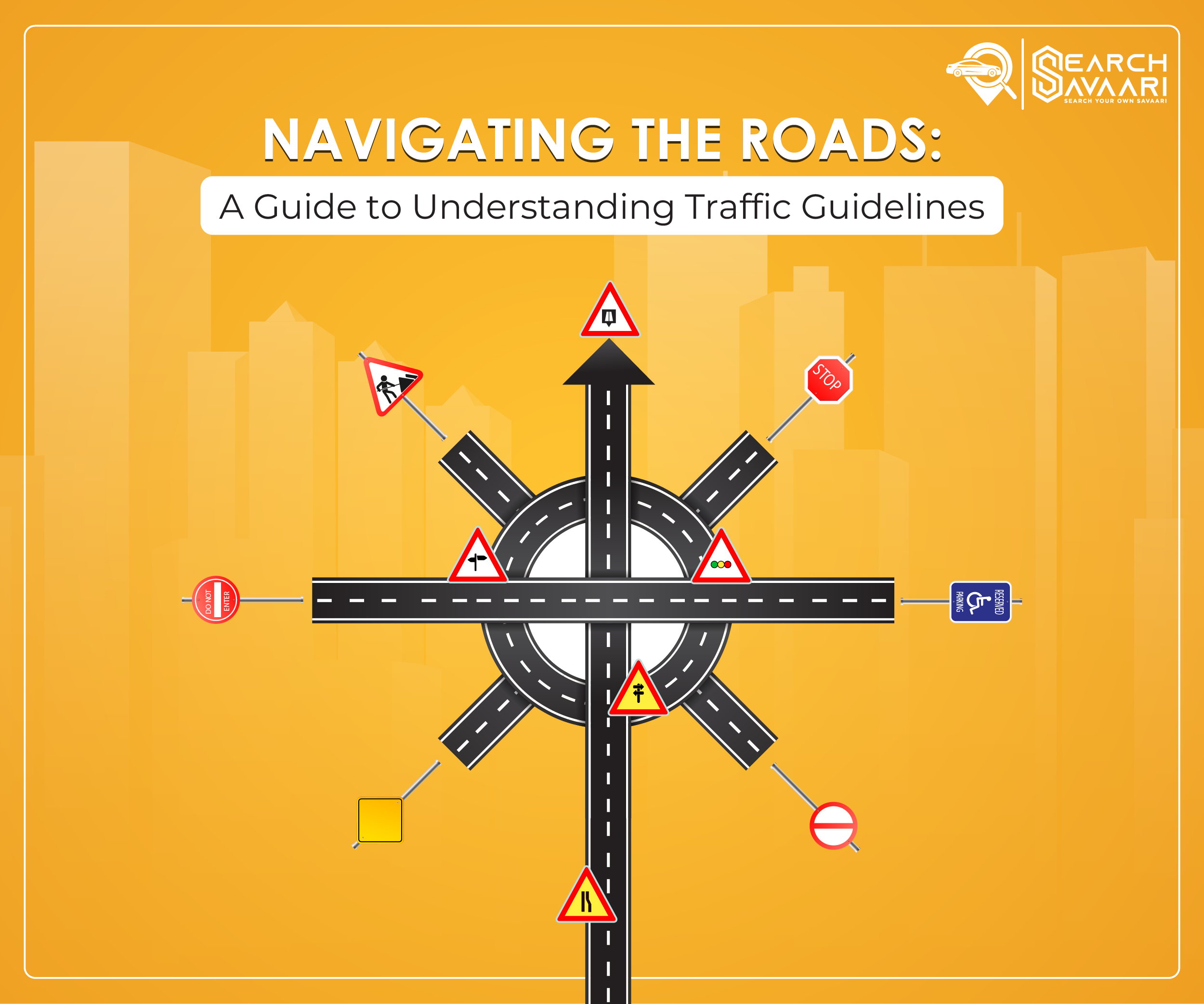Blog Detail
Our Search Savaari

Navigating the Roads: A Guide to Understanding Traffic Guidelines
1. Obey Traffic Signals and Signs
Traffic signals and signs are there for a reason – they regulate the flow of traffic and ensure everyone's safety. Red lights mean stop, green means go, and yellow signals caution, preparing you to stop. Signs such as Stop, Yield, and Speed Limit should be followed without exception.
2. Stay Alert and Minimize Distractions
Distractions like texting, eating, or using a phone can take your attention away from the road, increasing the risk of accidents. It's imperative to stay alert and keep distractions to a minimum.
3. Follow Speed Limits
Speed limits are set based on the road conditions, traffic, and urban planning norms. Adhering to these limits is not just a legal requirement but also a precaution to prevent accidents.
4. Use Turn Signals
Communicating your intent to turn or change lanes with turn signals allows other drivers to anticipate your actions and react accordingly, which can prevent collisions.
5. Keep a Safe Following Distance
Maintaining a safe distance between your vehicle and the one in front of you gives you ample time to react in case of sudden stops, reducing the risk of rear-end collisions.
6. Respect Pedestrians
Pedestrian safety is paramount. Always stop for pedestrians at crosswalks and be vigilant for those trying to cross at other sections of the road.
7. Adhere to Right-of-Way Rules
Knowing when to yield the right-of-way is crucial. At intersections, yield to the vehicle that arrived first or to the one on your right if you arrived simultaneously.
8. Avoid Blocking Intersections
Even if you have the green light, do not enter an intersection unless you can get all the way through it. Blocking intersections can cause gridlock and impede emergency vehicles.
9. Stay in the Correct Lane
Stick to the right lane if you're driving slower than the traffic flow, use the left lane for overtaking, and always follow lane markings.
10. Be Mindful of Weather Conditions
Bad weather calls for modified driving behavior. Slow down, increase following distance, and use your headlights in rain, fog, or snow.
11. Never Drive Under the Influence
Alcohol and drugs impair judgment and reaction times. Driving under the influence is illegal and increases the chance of accidents.
Conclusion
Traffic guidelines are designed to protect you and others on the road. By respecting these rules, you contribute to a smoother, faster, and safer journey for everyone. Remember, traffic safety is a collective responsibility – it starts with each one of us doing our part. Drive safely, respect the rules, and help ensure that everyone can get to their destinations without incident.